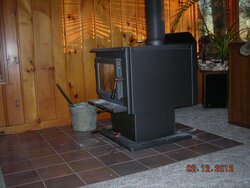woodsmaster
Minister of Fire
"Some people have mentioned using natural gas boiler? If I did this would it be easy to transfer to a wood gasser system if gas prices went out of sight? "
Yes It wouldn't be to bad to switch as long as you had a flu or a way to put a chiminey in. You could also have
both hooked together so when you want you can burn wood you can, or if the wood goes out the gas will kick in. The boilers
would usually be beside each other to simplify plumbing and controls.
Yes It wouldn't be to bad to switch as long as you had a flu or a way to put a chiminey in. You could also have
both hooked together so when you want you can burn wood you can, or if the wood goes out the gas will kick in. The boilers
would usually be beside each other to simplify plumbing and controls.


